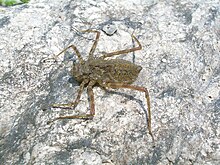
Back Naaldekoker Afrikaans يعسوب Arabic يعسوب ARZ ফৰিং Assamese Anisoptera AST Capung BAN Šarontios BAT-SMG Alibangbang BCL Разнакрылыя стракозы Byelorussian Sisiur BJN
| Dragonfly | |
|---|---|

| |
| Yellow-winged darter Sympetrum flaveolum | |
| Scientific classification | |
| Domain: | Eukaryota |
| Kingdom: | Animalia |
| Phylum: | Arthropoda |
| Class: | Insecta |
| Order: | Odonata |
| Suborder: | Epiprocta |
| Infraorder: | Anisoptera Selys, 1854 |
| Families | |
| |





Dragonflies are flying insects of the order Odonata. There are about 5,300 species of dragonfly. The adults eat other flying insects.[1]
Dragonflies have large compound eyes, which is their main sense organ. They have four strong transparent wings, and a long body.
Dragonflies are usually found around lakes, ponds, streams and wetlands. They are predators which eat mosquitoes, and other small insects such as flies, bees, ants, and butterflies. Their larvae, known as 'nymphs', are aquatic.[1] They are also carnivorous.
Because their legs are adapted to grab prey in the air, they are not adapted for moving on land. Once they perch, they rarely use their legs for walking.
Dragonflies have been around for 300 million years.[2] In the rain forests of the Carboniferous and Permian periods, some species had wingspans of over 2 ft (61 cm). Oxygen levels were quite high at that time.
- ↑ 1.0 1.1 Cite error: The named reference
Barneswas used but no text was provided for refs named (see the help page). - ↑ "Dragonflies, Wisconsin's aerial acrobats". www.dnr.state.wi.us. Archived from the original on 2008-05-17. Retrieved 2008-07-22.